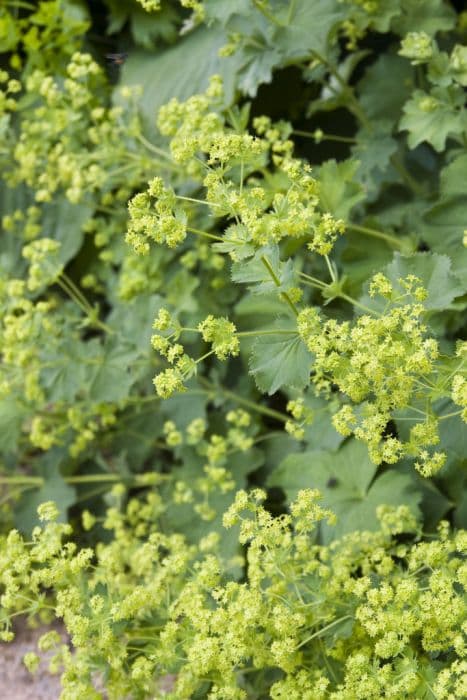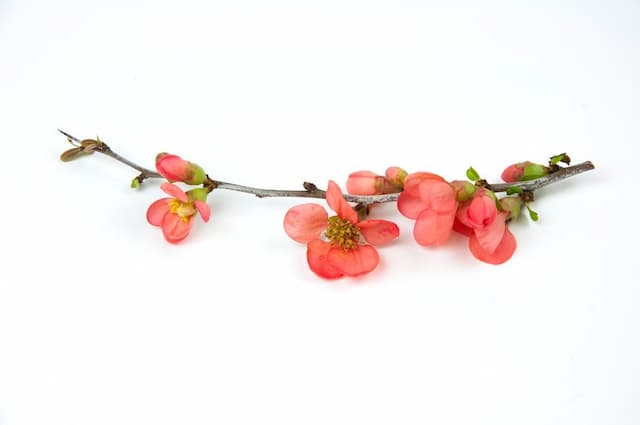Victoria plum Prunus domestica 'Victoria' (D)

ABOUT
The Victoria plum is a fruit-bearing plant known for its attractive appearance and delicious produce. This plant typically showcases a spreading canopy of branches that burst into a profusion of white blossoms during the spring. These flowers are beautifully delicate, yet dense enough to create a stunning display that covers the branches. As the season progresses, the flowers give way to the fruit for which this plant is grown. The Victoria plum fruits are medium to large-sized and renowned for their exceptional sweetness. They possess smooth skin with a warm, golden-yellow background that is often mottled or blushed with a rosy hue when ripe. The flesh of these plums is a contrasting golden color, both juicy and firm with a rich, sugary flavor. The leaves of the Victoria plum are green and have a simple, oblong shape with a slightly serrated edge, providing a lush backdrop to the white flowers and golden fruit. Overall, the appearance of the Victoria plum plant is one of charm and abundance, attracting not only fruit lovers but also wildlife such as bees and birds who are drawn to its blossoms and fruits.
About this plant
 Names
NamesSynonyms
Victoria Plum, Common Plum
Common names
Prunus domestica 'Victoria'
 Toxicity
ToxicityTo humans
Victoria plum is the common name of Prunus domestica 'Victoria'. The fruit of the Victoria plum itself is not toxic to humans and can be safely consumed. However, other parts of the plant, particularly the leaves, stem, and seeds within the pits, contain cyanogenic glycosides which can release cyanide when ingested. If parts of the plant containing these compounds are consumed in large amounts, it can lead to cyanide poisoning. The symptoms of cyanide poisoning may include headache, confusion, agitation, difficulty breathing, and potentially lethal respiratory failure.
To pets
Victoria plum, also known to pets simply as plum, can be toxic to them. While the flesh of the fruit is generally not harmful, the pits, leaves, and stems contain cyanogenic glycosides. These compounds can release cyanide when metabolized. If a pet ingests significant amounts of these parts of the plum tree, it can lead to cyanide poisoning. Symptoms of poisoning in pets could include dilated pupils, difficulty breathing, panting, and shock. If a large enough quantity of cyanide is absorbed, it can be fatal. Therefore, it is important to prevent pets from accessing or chewing on plum pits, leaves, and stems.
 Characteristics
CharacteristicsLife cycle
Perennials
Foliage type
Deciduous
Color of leaves
Green
Flower color
White
Height
12 feet (3.66 meters)
Spread
10 feet (3.05 meters)
Plant type
Tree
Hardiness zones
5
Native area
Europe
Benefits
 General Benefits
General Benefits- Edible Fruits: The Victoria plum provides sweet and juicy fruits that are edible and can be eaten fresh from the tree.
- Culinary Uses: The fruits are versatile for cooking and baking, used in jams, jellies, pies, and other desserts.
- Home Gardening: Suitable for home gardens, it can be an attractive addition due to its spring blossoms and summer fruit.
- Pollinator Attraction: Its flowers attract bees and other pollinators, which are essential for fruit production and ecosystem health.
- Aesthetic Appeal: The tree has a decorative aspect with its white to pale pink blossoms in the spring, providing ornamental value.
- Shade Provider: Once mature, the tree can offer shade in gardens and outdoor spaces during summer months.
- Seasonal Interest: Offers year-round interest with blossoms in spring, fruit in late summer, and leaf color change in the autumn.
 Medical Properties
Medical Properties- Laxative effects: The Victoria plum is known to contain dietary fiber which can aid in bowel regularity.
- Antioxidant properties: They are a source of vitamins, especially vitamin C, which can help in protecting against oxidative stress.
- Vitamin K content: The plums contain vitamin K, which is essential for blood clotting and bone health.
- Potassium source: High in potassium, they can contribute to maintaining a healthy blood pressure level.
- Rich in minerals: Contains minerals like potassium, iron, and fluoride which are beneficial for overall health.
 Air-purifying Qualities
Air-purifying QualitiesThis plant is not specifically known for air purifying qualities.
 Other Uses
Other Uses- Vinegar Production: The fruit of the Victoria plum can be fermented into a richly flavored vinegar, often used in salad dressings and marinades.
- Natural Fabric Dye: The skin and flesh of Victoria plums can be used to dye fabrics in shades of pink, purple, or reddish hues, depending on the mordant used.
- Fruit Leather: Pureed Victoria plum flesh can be dried into a sweet, chewy fruit leather, providing a long-lasting and portable snack option.
- Culinary Syrup: Reducing the juice of Victoria plums creates a thick syrup perfect for drizzling over desserts, pancakes, or ice cream.
- Woodworking: While not a typical use, the wood of the Victoria plum tree can be used in woodworking for small projects like crafting knife handles or inlay work.
- Insect Deterrent: Overripe Victoria plums can be used to create traps for fruit flies and other insects, helping to control their population in your garden.
- Livestock Feed: Fallen or overripe Victoria plums can be used as a supplemental food source for pigs and other livestock, reducing waste.
- Composting: Victoria plum remains, such as skins and pits, are biodegradable and can be added to compost as a source of organic matter.
- Art Supplies: The plum juice can be used as a natural watercolor paint, which can be a fun and eco-friendly artistic endeavor for kids and adults alike.
- Potpourri: Dried Victoria plum flowers and leaves can contribute a subtle, fruity fragrance to homemade potpourri mixtures.
Interesting Facts
 Feng Shui
Feng ShuiThe Victoria plum tree is not used in Feng Shui practice.
 Zodiac Sign Compitability
Zodiac Sign CompitabilityThe Victoria plum tree is not used in astrology practice.
 Plant Symbolism
Plant Symbolism- Wealth and Abundance: The Victoria plum, being a fruitful plant, is often associated with wealth and the abundance of harvests, symbolizing prosperity.
- Innocence: With its delicate flowers, the Victoria plum can represent purity and the innocence of youth, as well as new beginnings.
- Fertility: The Victoria plum's prolific nature makes it a symbol of fertility and growth, both physically and in one's endeavors.
- Beauty: The attractive blooms and fruits of the Victoria plum can signify beauty and the appreciation of aesthetic pleasures.
- Renaissance: As the Victoria plum tree revives each spring with fresh blossoms, it symbolizes renewal and the rejuvenation of life and spirit.
 Water
WaterThe Victoria plum tree should be watered deeply once a week during the growing season, with about 1.5 to 2 gallons of water per session, depending on the weather and soil moisture levels. In the absence of rain, watering frequency should be increased, especially for young trees. Mature trees may require less frequent watering but with greater volume, up to 4 gallons, to ensure the water reaches the deeper roots. During winter or periods of heavy rainfall, reduce watering to prevent waterlogging. Always check the soil moisture before watering; it should be moist but not soggy.
 Light
LightVictoria plum trees thrive in full sun, where they can receive at least six hours of direct sunlight daily. It is best positioned in an open space without shade from buildings or other trees to ensure ample light and air circulation, which is vital for healthy growth and fruit production.
 Temperature
TemperatureVictoria plum trees grow best in temperatures ranging between 35°F and 85°F. They can withstand winter temperatures down to around -20°F once fully dormant and summer highs up to about 95°F. The ideal temperature range for promoting good fruit set and growth is between 50°F and 75°F.
 Pruning
PruningPrune the Victoria plum tree to remove dead or diseased wood, improve air circulation, and shape the tree. This is best done in late winter or early spring before new growth starts. Pruning should be done yearly to maintain the health and productivity of the tree; cut back one-third of the previous year’s growth to promote fruiting wood.
 Cleaning
CleaningAs needed
 Soil
SoilFor Victoria plum trees, the best soil mix is well-drained, fertile loam with a pH of 6.0 to 7.5. It benefits from the addition of compost or aged manure to increase fertility.
 Repotting
RepottingVictoria plum trees, being outdoor fruit trees, don't typically require repotting. Instead, they are planted in a permanent location where they can grow undisturbed for many years.
 Humidity & Misting
Humidity & MistingVictoria plum trees tolerate a wide range of humidity levels and do not have specific humidity requirements, but they perform best in the moderate humidity typical of temperate climates.
 Suitable locations
Suitable locationsIndoor
Growing Victoria plums indoors isn't practical due to their size.
Outdoor
Plant in sunny spot, fertile, well-drained soil, spacing 15-20 feet.
Hardiness zone
5-9 USDA.
 Life cycle
Life cycleThe 'Victoria' plum tree (Prunus domestica 'Victoria') life cycle starts with germination, where the seed sprouts after a period of stratification or cold treatment. It progresses to a juvenile phase, characterized by rapid vegetative growth and the development of roots, stems, and leaves but no flowers or fruit. After several years, the tree enters the reproductive phase, producing blossoms and, subsequently, plums if pollination occurs. Post-pollination, fruits develop and ripen over the course of the summer, after which they can be harvested. Once mature, the tree goes through annual cycles of dormancy in winter, flower production in spring, and fruiting in late summer, while also growing larger and producing more fruit each year. The tree will eventually reach old age, where growth slows and fruit production decreases until it dies.
 Propogation
PropogationPropogation time
Summer-autumn
The European plum 'Victoria' is commonly propagated by grafting. This preferred method typically takes place in late winter or early spring when the rootstocks are still dormant but just about to wake up. A piece of a 'Victoria' plum shoot or "scion" with several buds is joined to a compatible rootstock by making corresponding cuts in both the scion and the rootstock, then binding them securely together. This allows the tissues of the two to grow together and establish a strong vascular connection. The graft union is then sealed with grafting tape or wax to prevent desiccation and infection. After grafting, the new trees are planted out and cared for until the graft union is strong, and the scion begins to grow as the top of the new plum tree.









